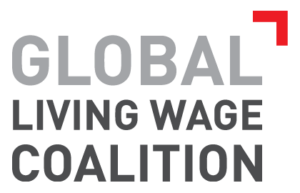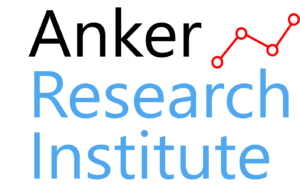A month back, the International Labor Organisation (ILO) announced a milestone agreement on living wages, raising hopes for millions of workers around the world that decent wages could become a reality. Today most leading companies across sectors are either contemplating or committing to pay living wages to workers in their supply chains. At a time when the idea of living wages is going from niche to norm, it is worth pausing and asking what it took for the original idea to take root.
One of the early disruptors in the living wage movement was the Global Living Wage Coalition (the GLWC). The idea emerged in 2012 when three standard-setting organisations (Social Accountability International (SAI), Fairtrade International and GoodWeave), came together recognising that despite the uptake of their sustainability standards in key sectors, worker wages remained deplorable, especially in developing countries. Coming together to tackle the issue was a good first step, but the lack of a commonly agreed definition on what a living wage was and clarity on how to measure it were significant barriers to action.
To overcome this, these schemes teamed up with international wage experts Martha and Richard Anker to work towards these goals. Soon thereafter, they were joined by Rainforest Alliance, UTZ Certified, Sustainable Agriculture Network, and Forest Stewardship Council, thus giving birth to the Global Living Wage Coalition. Their shared mission: to go beyond minimum wage requirements and strive for real improvements in workers’ conditions worldwide. Today, the GLWC’s definition of a living wage is globally recognised and the Anker Methodology for calculating living wages is upheld as the best in class, in full accordance with recently issued ILO guidelines for estimating living wages.

GLWC members gathered in Amsterdam in September 2023.
A unique knowledge-action partnership
What knowledge is needed to support and inform action on the ground? And can action from the ground inform research methods and approaches? This symbiotic relationship between knowledge and research lies at the heart of the GLWC’s approach and is the key to supporting genuine wage improvement plans within supply chains.
The GLWC is comprised of two complementary parts—the Anker Research Institute (ARI) (led by Richard and Martha Anker), who lead the research and knowledge generation; and the Action Network, comprised of organisations working within supply chains with companies, employers and workers to advance on wages. The Action Network is today led by Fairtrade International, Rainforest Alliance and Social Accountability International, with newer supporting members Aquaculture Stewardship Council, Bonsucro, Fair Labor Association, Fairtrade USA and Union for Ethical Biotrade (UEBT).
What binds the action network together is alignment and commitment to the Anker Methodology, continuous improvement and innovation, research and action together, collaboration and support for collective bargaining. These principles guide the GLWC’s work, ensuring a cohesive approach when striving for a decent standard of living for all workers and their families.
The role of the GLWC over the last decade
Over the last ten years, one of the key achievements of the GLWC has been to invest in the Anker Methodology and directly fund the development of a large bank of credible living wage benchmarks for different sectors and geographies in the developing world. Today, we have independently measured and publicly available living wage and living income estimates for more than 100 locations in over 50 countries – being used by unions, companies and standard-setters and auditing companies to improve wages for workers.
The investment in the Anker Methodology and Research Institute is not limited to benchmarks alone—the GLWC has also supported improvement and innovation in the Anker approach, including the development of reference values, national and sub-national estimates and more recently the credible valuation of in-kind benefits. All of these developments directly stemmed from action-based research needs and will have a lasting impact on the ability of supply chain actors to credibly advance on living wages.
This knowledge and data emerging from the Anker Research Institute has been used by the GLWC’s members and others to operationalize living wages within supply chains in a range of ways. For standard-setters, this data enabled the inclusion of living wages within their standards and assessing progress by certified operations towards living wage benchmarks. For companies, the availability of such estimates became the first step towards calculating living wage gaps and considerations around how to bridge them. For the rest of the world, the availability of independently researched, globally comparable and publicly available estimates of living wages laid bare how low worker wages were in most regions and why a focus on minimum wages was utterly insufficient.
The GLWC has also been vocal in supporting grassroots wage campaigns around the world, including our support for the ‘Good Clothes Fair Pay’ campaign and the recent protest in Bangladesh by garment workers fighting for higher wages.
Looking ahead to the next ten years
As we celebrate this milestone, we look to the future, envisioning a world where wages uphold the dignity of labour. With its priorities set for 2024-2026, the GLWC aims to guide and inspire effective action within the living wage movement. Elevating worker-driven actions, informing supply chain actors, and guiding policymakers are key components of this objective, as well as building understanding and driving conversations around success and meaningful steps.
Facilitating action through alignment is another core objective. Ensuring the sustainability of the Anker living wage estimates, expanding the use of the Anker Methodology, and fostering alignment on measurement and definitions form the crux of this objective. Public access to high-quality, consistent research remains a priority to empower stakeholders, promoting a shared understanding of effective practices.
Alongside the GLWC’s priorities, the ARI underlines its commitment to consolidating and expanding the Anker Sub-National Living Wage Estimates program. The ARI seeks to increase the coverage of living wage and living income estimates across the Global South and develop research projects supporting the payment of living wages to vulnerable groups. ARI also endeavours to establish itself as the primary resource for discussion and data on living wage by enhancing the ARI website. Together, the GLWC and ARI are dedicated to collaborating with global stakeholders to sustain the living wage and living income movement.
Join our public dialogue this year
This year, which marks a decade of the GLWC’s work and commitment to global wage improvement, we will be hosting two public dialogues to advance our collective understanding. Our first dialogue will focus on bringing the unique knowledge-action partnership to life. The session will explore what it means to run an action-oriented research program and why this orientation is critical. The second dialogue will concentrate on social dialogue and worker participation in the living wage movement. We look forward to having you join us in commemorating the last ten years and looking forward to the next.





